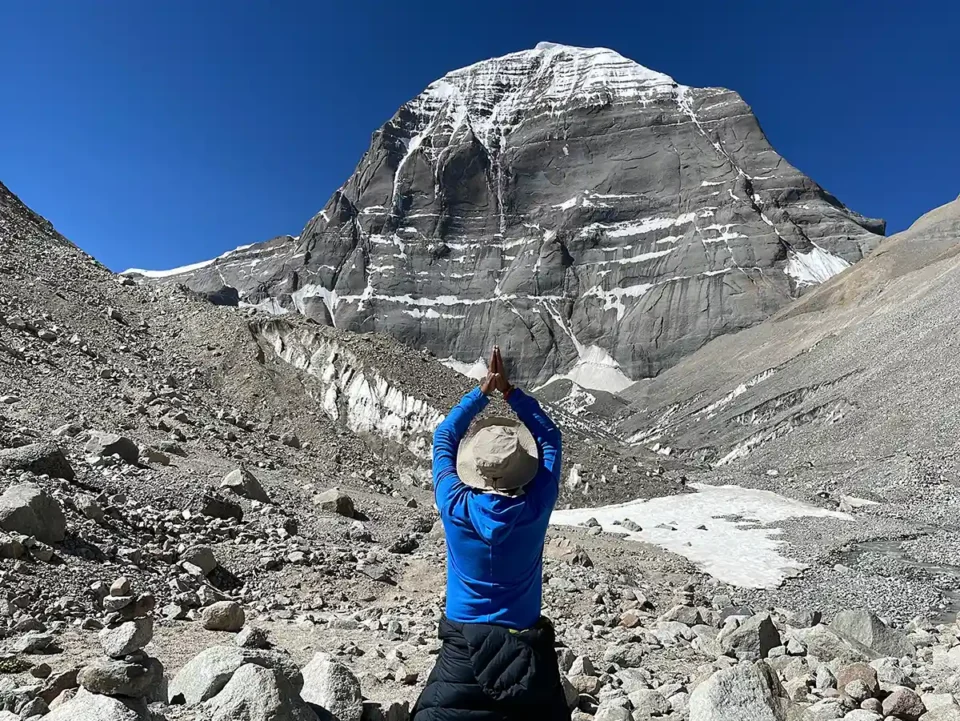The Kailash Mansarovar Yatra is a pilgrimage of profound spiritual significance for Hindus, Buddhists, Jains, and Bon practitioners. This sacred journey leads devotees to the revered Mount Kailash, considered the abode of Lord Shiva in Hinduism, and the pristine Lake Mansarovar, believed to be the source of four major Asian rivers. Embarking on this pilgrimage is a transformative experience that offers a unique blend of spiritual upliftment, breathtaking landscapes, and cultural immersion.

Table of Contents
The Sacred Mountains and Lake
Mount Kailash
Towering at an altitude of 6,638 meters, Mount Kailash stands as a majestic and enigmatic peak in the Tibetan Plateau. Revered as the axis mundi or the center of the world in various religions, Kailash is considered a sacred mountain that must be circumambulated (Parikrama) in a clockwise direction. The Parikrama is a challenging yet rewarding spiritual journey that takes pilgrims around the mountain’s base, covering a distance of approximately 52 kilometers.
Lake Mansarovar
Situated near Mount Kailash, Lake Mansarovar is a freshwater lake of immense spiritual significance. The Hindu, Buddhist, and Jain traditions revere Lake Mansarovar as their holiest lake. Many believe the source of Asia’s four major rivers—the Indus, Ganges, Brahmaputra, and Yellow River—flows here. Taking a dip in these pristine waters is considered a sacred ritual. Devotees believe this act offers purification and blessings.

Routes to Kailash Mansarovar
There are primarily two main routes to undertake the Kailash Mansarovar Yatra:
- Nepal Route: This route is considered relatively easier and more accessible. It involves traveling to Kathmandu, Nepal, and then crossing the border into Tibet. The journey continues through the rugged Tibetan Plateau, offering breathtaking landscapes and a glimpse into the unique Tibetan culture.
- India Route: This route involves traveling to the northern Indian states of Uttarakhand or Sikkim and then crossing the border into Tibet. The Lipulekh Pass in Uttarakhand and Nathu La Pass in Sikkim are the two main entry points for this route.
Best Time to Visit
The ideal time to undertake the Kailash Mansarovar Yatra is during the summer months, typically between May and September. The weather is relatively pleasant during this period, with clear skies offering stunning views of the Himalayas. However, it’s essential to be prepared for altitude sickness, as the region sits at a high altitude.
Challenges and Preparations
The Kailash Mansarovar Yatra is a physically demanding pilgrimage that requires proper preparation. Some of the challenges include:
- High Altitude: The journey takes place at high altitudes, increasing the risk of altitude sickness. Acclimatization is crucial, and it’s advisable to spend a few days at lower altitudes before ascending to higher elevations.
- Harsh Weather Conditions: The weather in the region can be unpredictable, with sudden temperature drops and strong winds. It’s essential to pack appropriate warm clothing and be prepared for changing weather conditions.
- Limited Infrastructure: In the remote areas of the pilgrimage, facilities and amenities are limited. Prepare for basic accommodations and limited access to modern conveniences.
- Spiritual Readiness: The Yatra is a profound spiritual experience. You must have a strong spiritual foundation and mentally prepare yourself for the challenges and rewards of the journey.
Kailash Mansarovar Overland Tour
For those seeking a more adventurous and immersive experience, an overland tour can be an excellent choice. Kailash Overland Tours offers the opportunity to explore the region at a slower pace, interact with local communities, and witness the breathtaking landscapes up close. These tours typically involve a combination of road travel, trekking, and camping, allowing participants to connect with nature and the local culture on a deeper level.
Key Highlights of an Overland Tour:
- Scenic Drives: Journey through the rugged Tibetan Plateau, passing through picturesque landscapes, remote villages, and sacred Tibetan Buddhist monasteries.
- Camping Experience: Spend nights under the starry sky, surrounded by the majestic Himalayas.
- Cultural Immersion: Interact with local communities, learn about their traditions, and experience their warm hospitality.
- Spiritual Exploration: Immerse yourself in the spiritual ambiance of the region, visiting sacred sites and participating in traditional rituals.
The Spiritual Significance of Kailash Mansarovar
Kailash Mansarovar holds immense religious and spiritual significance for Hindus, Buddhists, Jains, and Bon practitioners. Hindus believe Lord Shiva resides on Mount Kailash, making its circumambulation a sacred act. Buddhists associate Mount Kailash with the mythical Mount Meru, the center of the universe, and consider Lake Mansarovar as a symbol of purity and enlightenment. Jains believe that the first Tirthankara, Rishabhanatha, attained enlightenment on Mount Kailash, while Bon practitioners consider it a sacred mountain with its own spiritual traditions.
Practical Considerations for the Yatra
- Permits and Documentation: Obtaining necessary permits for both India and Tibet is crucial. Ensure you have a valid passport, visa, and all required permits before embarking on the journey.
- Physical Fitness: The Yatra involves physical exertion, including hiking and trekking at high altitudes. It’s essential to be in good physical condition and acclimatize properly to avoid altitude sickness.
- Medical Kit: Carry a comprehensive medical kit, including medication for altitude sickness, diarrhea, and other common ailments.
- Warm Clothing: Pack warm clothing as temperatures can drop significantly, especially at night.
- Respectful Behavior: Adhere to local customs and traditions, dress modestly, and respect the religious sentiments of the people.
Conclusion
The Kailash Mansarovar Yatra is a transformative pilgrimage that offers a profound spiritual experience and a chance to witness the awe-inspiring beauty of the Himalayas. Whether you choose to embark on a guided tour or plan your journey independently, proper preparation and respect for the sacredness of the region are essential.

